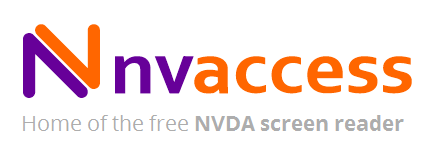Accessibility and the World Wide Web (Part 1)
Hey! Just so you know, this article is over 2 years old. Some of the information in it might be outdated, so take it with a grain of salt. I'm not saying it's not worth a read, but don't take everything in it as gospel. If you're curious about something, it never hurts to double-check with a more up-to-date source!
In the UK there are over 11 million people with some form of disability (Disability facts and figures, 2014). That is over 15% of the overall population. These disabilities can include vision, hearing, and cognitive disabilities, all of which will influence how an individual engages with a web page or mobile application. To ensure there is no discrimination based on ability and applications cater to everyone, research has been done over the years on how to improve the usability for those with impairments. To keep this post brief I will be discussing 2 tools to improve accessibility, as there are countless tools and processes which I will be discussing in future posts.
NVDA
# If you wish to test out NVDA yourself then you can download it for free at https://goo.gl/A5eRnL So before you download NVDA, you are probably wondering what is NVDA? NVDA is a free screen reader for Windows operating systems. This tool will provide those with disabilities the ability to browse a website and have the contents read back to you. This is great for those who have visual impairments. I have tested the tool myself and although it read the text too quickly and in a weird voice from the get go, I found that there are a range of settings which allow you to customise how the tool works to what feels comfortable for you. I would highly recommend downloading the tool and testing websites you have developed to get an understanding of how it will sound to those who use it to browse your websites.
If you wish to test out NVDA yourself then you can download it for free at https://goo.gl/A5eRnL So before you download NVDA, you are probably wondering what is NVDA? NVDA is a free screen reader for Windows operating systems. This tool will provide those with disabilities the ability to browse a website and have the contents read back to you. This is great for those who have visual impairments. I have tested the tool myself and although it read the text too quickly and in a weird voice from the get go, I found that there are a range of settings which allow you to customise how the tool works to what feels comfortable for you. I would highly recommend downloading the tool and testing websites you have developed to get an understanding of how it will sound to those who use it to browse your websites.Accessibility Developer Tools
# Once you have run the audit, you will be presented with a list of results. These are as follows - Severe - Attend to the problem with high priority as it affects those with disabilities. Warning - Look into improving these elements, as it will improve usability to those with disabilities. Pass/NA - All looks good, no need to improve or attend to.
Once you have run the audit, you will be presented with a list of results. These are as follows - Severe - Attend to the problem with high priority as it affects those with disabilities. Warning - Look into improving these elements, as it will improve usability to those with disabilities. Pass/NA - All looks good, no need to improve or attend to.  In summary, this tool will allow you to review and investigate where a website needs to improve, in order to cater for those with disabilities. Most people will neglect accessibility as they don't see it as an issue. If losing 15% of your potential audience wasn't an issue then developers wouldn't have fallbacks for internet explorer or use vendor prefixes, the internet would be a mess. However, this shouldn't just be about a conversion rate or increase in viewership. This should be about providing humans with the same opportunities that we are given on a daily basis. You never know, one day when you are old and grey, you may need to use accessibility tools to browse the internet.
In summary, this tool will allow you to review and investigate where a website needs to improve, in order to cater for those with disabilities. Most people will neglect accessibility as they don't see it as an issue. If losing 15% of your potential audience wasn't an issue then developers wouldn't have fallbacks for internet explorer or use vendor prefixes, the internet would be a mess. However, this shouldn't just be about a conversion rate or increase in viewership. This should be about providing humans with the same opportunities that we are given on a daily basis. You never know, one day when you are old and grey, you may need to use accessibility tools to browse the internet.References
#Disability facts and figures (2014) Available at: https://goo.gl/DA8DyX (Accessed: 30 August 2016).